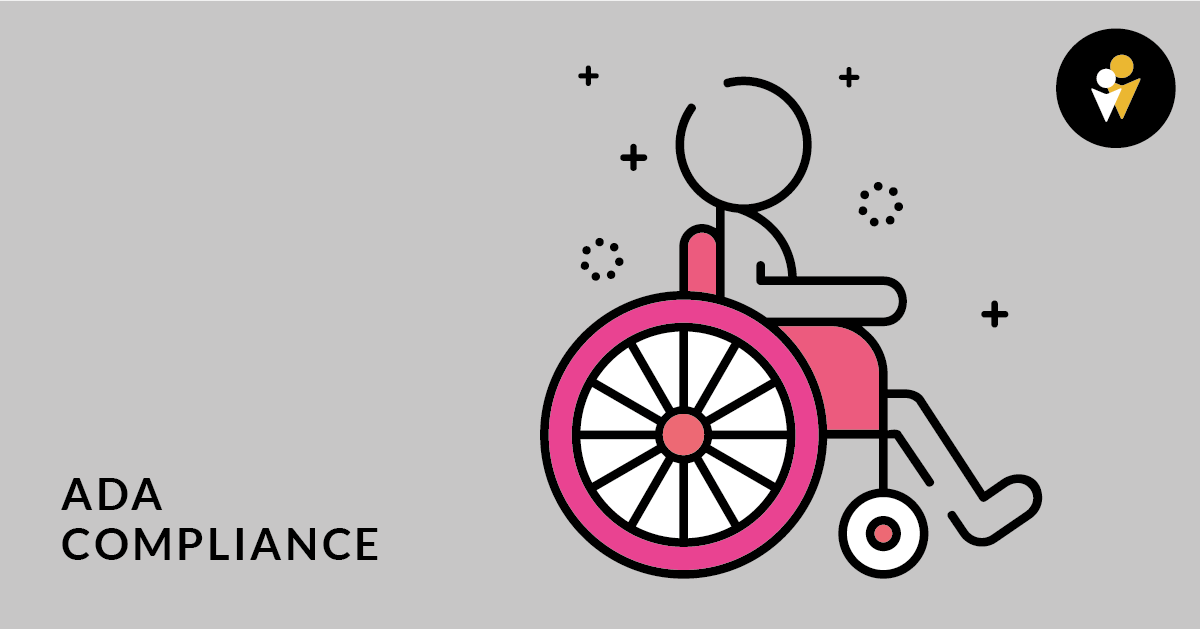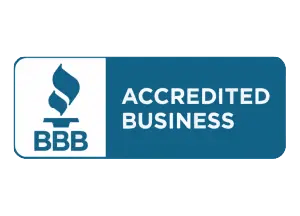Over the last decade, businesses have increasingly run into the same issue: They receive letters from lawyers threatening action due to their websites not being compliant with the Americans with Disabilities Act (ADA) guidelines.
Although we’ve done several ADA site audits and ensure our clients’ websites are ADA compliant, we also recognize that many business websites still aren’t doing the same.
If you’re unfamiliar, the Americans with Disabilities Act (ADA) is a civil rights law that prohibits discrimination against individuals with disabilities in all facets of public life, as well as any public or private place open to the general public.
The ADA became law back in 1990, a time when business websites were exceedingly rare and the concept of inbound marketing hadn’t yet been invented. However, a little over a decade ago, the ADA updated its standards with regulations for website accessibility.
So, we want to ensure you’re aware of what you need to know about ADA website compliance and guidelines. This is even more important if you’re working on a new website.
Does Your Business Need an ADA Compliant Website?
Even though ADA internet compliance is something all websites should strive for, it isn’t a requirement for every business. However, Title III of the ADA restricts compliance to any “place of public accommodation.” What exactly does that mean?
We recently spoke to our lawyers at Morella & Associates about how to determine whether a website is subject to comply with the ADA’s website accessibility requirements. A place of public accommodation is “a facility whose operations affect commerce” and also falls within at least one of 12 categories:
| 1 | 2 | 3 | 4 |
| Inns, hotels, motels, or other places of lodging | Restaurants, bars, or other establishments that serve food or drinks | Movie theaters, theaters, concert halls, stadiums, or other places of entertainment or exhibition | Convention centers, auditoriums, lecture halls, or other public gathering places |
| 5 | 6 | 7 | 8 |
| Clothing stores, bakeries, grocery stores, hardware stores, shopping centers, or other sales or rental establishments | Banks, pharmacies, barber shops, beauty shops, health care providers, hospitals, or other service establishments | Any station, terminal, or depot used for specified public transportation | Museums, libraries, galleries, or other places of public displays or collections |
| 9 | 10 | 11 | 12 |
| Amusement parks, zoos, parks, or other recreational places | Nurseries, private schools of any level, or any other places of education | Any social service center establishment, such as a day care center, homeless shelter, food bank, adoption agency, or senior citizen center | Golf courses, health spas, gymnasiums, bowling alleys, or any other place of recreation or exercise |
If you’re still uncertain as to whether your business falls into one or more of the above categories, consult page 32 of this PDF from the ADA for additional details: Americans with Disabilities Act: Title III Regulations.
Are there Exceptions to ADA Compliance Guidelines?
If you meet the ADA’s definition of “place of public accommodation,” failing to be compliant with their website guidelines could put you at risk for a lawsuit. However, you may be exempt from providing aids and services to those with disabilities if doing so would result in an "undue burden." An undue burden is defined as significant difficulty or expense.
To determine if making your website ADA accessible qualifies as an undue burden, you must review the cost in relation to your business size, overall financial resources, and overall expenses. Businesses with greater resources are generally expected to make a greater effort than businesses with fewer resources. Ultimately, what constitutes an undue burden varies from business to business and can even change from year to year.
Ultimately, if making your website ADA compliant will significantly harm your business, you should be exempt from doing so.
Additionally, businesses are exempt from ADA compliances when providing these additional aids or services fundamentally alter the nature of the business being done. For example, a theater would be exempt if it had to slow down the action on the stage in order to describe the action for patrons who are blind or have vision loss.
How Are ADA Website Compliance Guidelines Enforced?
If your business website is in violation of the ADA, the most common way this non-compliance will be enforced is if a disabled person decides to take action. The ADA gives people with disabilities the right to file lawsuits and obtain court orders to stop these violations.
If a lawsuit is filed against your business by an individual and your business loses the case, you may have to pay the winning party's attorney fees. You will not be fined for any violations because the ADA does not allow monetary damages to be assessed in these lawsuits. However, you may be required to provide an auxiliary aid or service as a result of this lawsuit.
Alternatively, anyone with a disability can also choose to file a complaint with the Department of Justice (DOJ), which will then investigate their complaint. The DOJ may also file lawsuits in situations considered to be of "general public importance" or in instances where a "pattern or practice" of discrimination is alleged. However, the DOJ can only file lawsuits if they previously attempted to settle any ADA violations through negotiations.
If a business loses a lawsuit brought by the DOJ, the business will not have to pay the DOJ's attorney's fees, but it may have to pay a fine. The maximum penalty for a first violation is $75,000 and any subsequent violation has a maximum of $150,000.
Our ADA Website Compliance Guidelines
There are no official guidelines to go by to ensure your website design is ADA compliant. Still, there are some general guidelines our Director of Web Development, Mariana Forteza, recommends you follow for your website and any marketing materials you produce:
Content

PROPER HEADINGS TAGS
Using headings properly helps those with screen readers or other visual impairments consume your content more easily. Don't just use bigger or bolder fonts to denote importance; follow the logical hierarchy for headings. The title should be H1, followed by an H2 for section titles, and H3 for any subsections. This makes the structure of your content easy to follow.

BULLETS, LISTS AND BOLDED KEYWORDS
Developing content that is easy to read is always important, but it is especially important for readers with cognitive disabilities. The easier your pages and documents are to scan, the better. Bulleted lists, bolded keywords, and summary sections are great ways to improve overall readability.

PROPER LINK TEXT
Simply saying "click here" when linking to other web pages isn't helpful. Using descriptive text for your links makes it easy for those with impairments to understand where links lead.
Design

VIDEOS
When possible, provide subtitles, transcripts, and audio descriptions for any videos on your website. These not only help those with hearing disabilities, but they can also be convenient for other users.

IMAGES
Avoid putting any text on images. Additionally, alt text should be included on every image on your website. Alt text is a short sentence or a few words that clearly describe the image in question. Failing to provide alt text can cause major usability issues for visually impaired visitors. Alt text is also great for SEO .

COLOR
Color blindness can cause usability issues on many websites, which is why color alone should never be used to indicate certain design elements on your website. Where possible, use highly contrasting colors to get your point across. In addition to color, use icons, patterns, borders, sizing, and even whitespace to communicate with visitors.

FONTS
Avoid using hard-to-read fonts and limit the number of fonts you use. Sans serif fonts are often preferred because they are easier to read.
Following these guidelines will make your website significantly more accessible to those with disabilities and significantly less susceptible to ADA-related lawsuits. The ADA does not have much on their website related to website guidelines, but they do offer some tips here: ADA Best Practices Tool Kit.
With ADA compliance still not being fully defined, these guidelines should only serve as a baseline for accessibility. If you need assistance in making your website more ADA compliant, Pittsburgh Internet Consulting can help.











